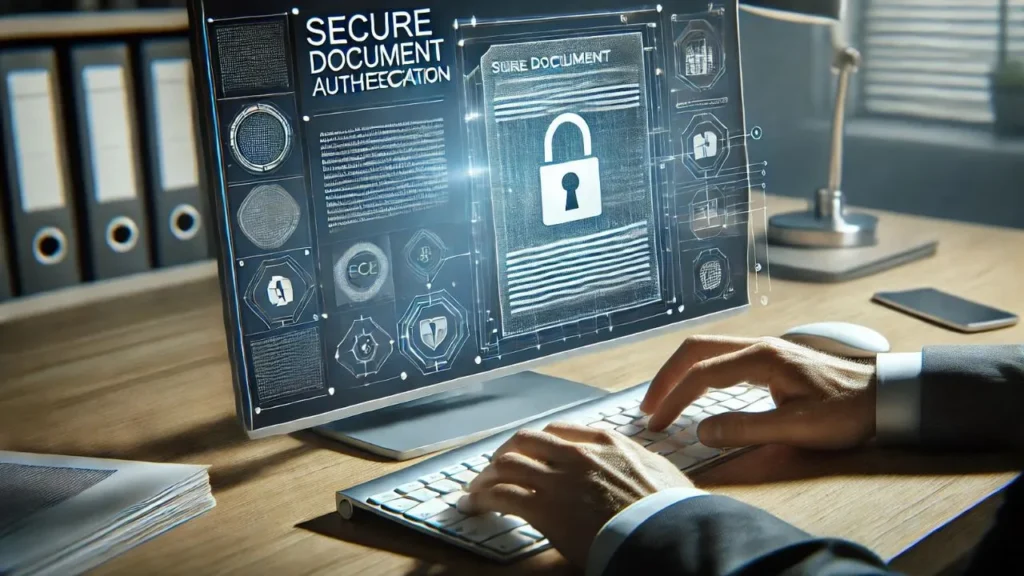In today’s digital age, securing and verifying documents is a growing challenge. With the rise of digital forgery and fraud, organizations need a reliable way to ensure that documents are authentic, protected, and verifiable. This is where Certidor comes into play. Certidor is a solution designed to address the concerns surrounding document authentication and security, providing organizations with a robust system to verify and safeguard important records.
This blog will explore what it is, how it works, and the advantages it offers. We’ll also delve into a real-life case study to illustrate how it can be effectively implemented in different settings.
What is Certidor?
Certidor is a document authentication system designed to verify the validity and origin of digital and physical documents. It ensures that the documents issued by an organization are genuine, tamper-proof, and easily verifiable by third parties. Certidor can be used by businesses, educational institutions, government agencies, and any entity that needs to secure sensitive information and official documents.
The system leverages advanced technologies, such as encryption, digital signatures, and blockchain, to provide a secure and traceable method for document verification. This makes it difficult for forgeries or unauthorized modifications to go unnoticed.
Why Document Authentication Matters
Document authentication is essential because it protects the integrity of records and helps build trust between parties. In many industries, such as education, healthcare, and legal sectors, the authenticity of documents like diplomas, contracts, medical records, and financial statements is critical.
Here are a few reasons why document authentication is important:
- Prevention of Fraud: With digital forgeries becoming more sophisticated, organizations need a reliable way to prove that their documents are legitimate. Certidor helps prevent the distribution and use of fraudulent documents.
- Compliance with Regulations: Many industries are subject to strict regulatory requirements, and document authentication ensures that records meet legal standards for integrity and validity.
- Data Security: It ensures that documents are encrypted and protected from tampering, safeguarding sensitive data from unauthorized access or modification.
- Efficiency in Verification: Manual document verification processes can be time-consuming and prone to errors. With Certidor, verification is quick, efficient, and automated.
How Certidor Works
Certidor operates by embedding secure, verifiable elements into each document it processes. These elements may include digital signatures, QR codes, or blockchain-based identifiers that allow recipients and third parties to authenticate the document quickly.
Step-by-Step Process:
- Document Issuance: When a document is created, it assigns a unique digital signature or code that is tied to the document’s origin and content.
- Encryption: The document is encrypted to prevent unauthorized access or modification. Any attempts to alter the document are flagged, and the integrity of the document is maintained.
- Verification: Recipients or third parties can scan the document’s code or use a digital tool provided by Certidor to verify its authenticity. The system checks the document’s metadata and digital signature to confirm that it is legitimate and has not been tampered with.
- Blockchain Traceability: For documents using blockchain technology, it provides a permanent, unchangeable record of the document’s history, allowing verification of the issuer and all transactions associated with the document.
By integrating it into their document workflow, organizations can ensure that every document they issue is secure and easy to verify.
Key Features of Certidor
Certidor offers several features that make it a powerful tool for document authentication. Here are some of its key capabilities:
- Digital Signatures: It allows documents to be digitally signed by authorized personnel, ensuring that the document’s origin can be verified and traced.
- Blockchain Integration: Using blockchain technology, Certidor provides a permanent record of each document’s history, making it impossible to alter without detection.
- QR Codes and Scannable Features: Documents can include unique QR codes that allow anyone to quickly verify their authenticity by scanning them with a smartphone.
- Encryption and Tamper-Proofing: It encrypts documents to prevent unauthorized access and modification, ensuring that sensitive information remains protected.
- Automated Verification: It’s platform allows for the automatic verification of documents, reducing the need for manual checks and the risk of human error.
- Customizable Solutions: It offers customizable features for different industries, ensuring that the authentication process meets the specific needs of an organization.
Case Study: Certidor in Higher Education
To illustrate the real-world application of Certidor, let’s look at a case study from a university that implemented Certidor for verifying student diplomas and transcripts.
The Challenge:
A well-known university in Europe was facing an issue with diploma fraud. Several fraudulent diplomas were discovered, with individuals presenting forged documents as part of their job applications. This not only damaged the university’s reputation but also led to a breakdown of trust between the university and employers. The university needed a solution that could securely authenticate diplomas and transcripts, making them tamper-proof and easily verifiable by employers and other institutions.
The Solution:
The university decided to integrate Certidor into its document issuance process. With it, each diploma and transcript issued by the university was embedded with a unique QR code and digital signature. The QR code allowed anyone to verify the document’s authenticity by scanning it with a smartphone, which linked to it’s secure platform.
Additionally, Certi-dor’s blockchain technology ensured that the document’s history, including its issuance and any interactions, was permanently recorded and unchangeable.
The Results:
- Reduced Fraud: The implementation of Certidor led to a significant reduction in diploma fraud. Employers and third parties could quickly and easily verify the authenticity of any document issued by the university.
- Increased Trust: The university restored its reputation for issuing secure, trustworthy documents. Employers reported higher confidence in the university’s credentials.
- Efficiency Gains: Certidor’s automated verification process eliminated the need for manual checks, saving the university time and reducing administrative costs.
The success of this case study demonstrates how it can be a game-changer for institutions that need to secure and authenticate important documents.
Industries Benefiting from Certidor
Certidor is versatile and can be used across a variety of industries. Some of the sectors that benefit from it’s document authentication system include:
- Education: Universities and colleges use it to authenticate diplomas, transcripts, and certificates, preventing fraud and ensuring that graduates’ credentials are secure.
- Healthcare: Hospitals and medical institutions can use it to authenticate medical records and certifications, ensuring patient data integrity and protecting against unauthorized access.
- Legal: Legal firms can use it to verify contracts, agreements, and court documents, ensuring that these documents are tamper-proof and legally binding.
- Finance: Banks and financial institutions can authenticate important documents like loan agreements, ensuring the legitimacy of financial records.
- Government: Certidor is useful for government agencies to secure and authenticate documents such as licenses, permits, and identification records.
How to Implement Certidor
Implementing Certi-dor in your organization is a straightforward process that involves a few key steps:
- Assess Your Needs: Identify the types of documents you need to authenticate and secure, whether they are digital, physical, or both.
- Choose the Right Features: Depending on your organization’s requirements, choose the features of it that best fit your needs (e.g., digital signatures, blockchain, QR codes).
- Integrate Certidor: Work with it’s team to integrate the platform into your existing document issuance system. This may involve connecting it with your document management software or implementing it’s verification tools on your website.
- Train Your Team: Ensure that your team understands how to use it’s platform to issue and verify documents securely.
- Communicate with Stakeholders: Let stakeholders, such as employees, students, or clients, know about the new document authentication system and how they can verify documents using Certidor.
FAQs
What is Certidor used for?
Certidor is used for document authentication, ensuring that documents are genuine, tamper-proof, and easily verifiable by third parties.
How does Certidor prevent fraud?
Certidor prevents fraud by embedding secure elements like digital signatures, QR codes, and blockchain technology into documents, making it impossible to alter them without detection.
Which industries benefit the most from Certidor?
Certidor is useful across multiple industries, including education, healthcare, legal, finance, and government, where secure and verifiable documents are critical.
Can Certidor be integrated with existing systems?
Yes, Certidor can be integrated with most document management systems, allowing organizations to seamlessly add authentication features to their existing workflows.
How does Certidor use blockchain technology?
Certi-dor uses blockchain to create a permanent, unchangeable record of each document’s history, ensuring that any interactions or modifications are traceable and transparent.







